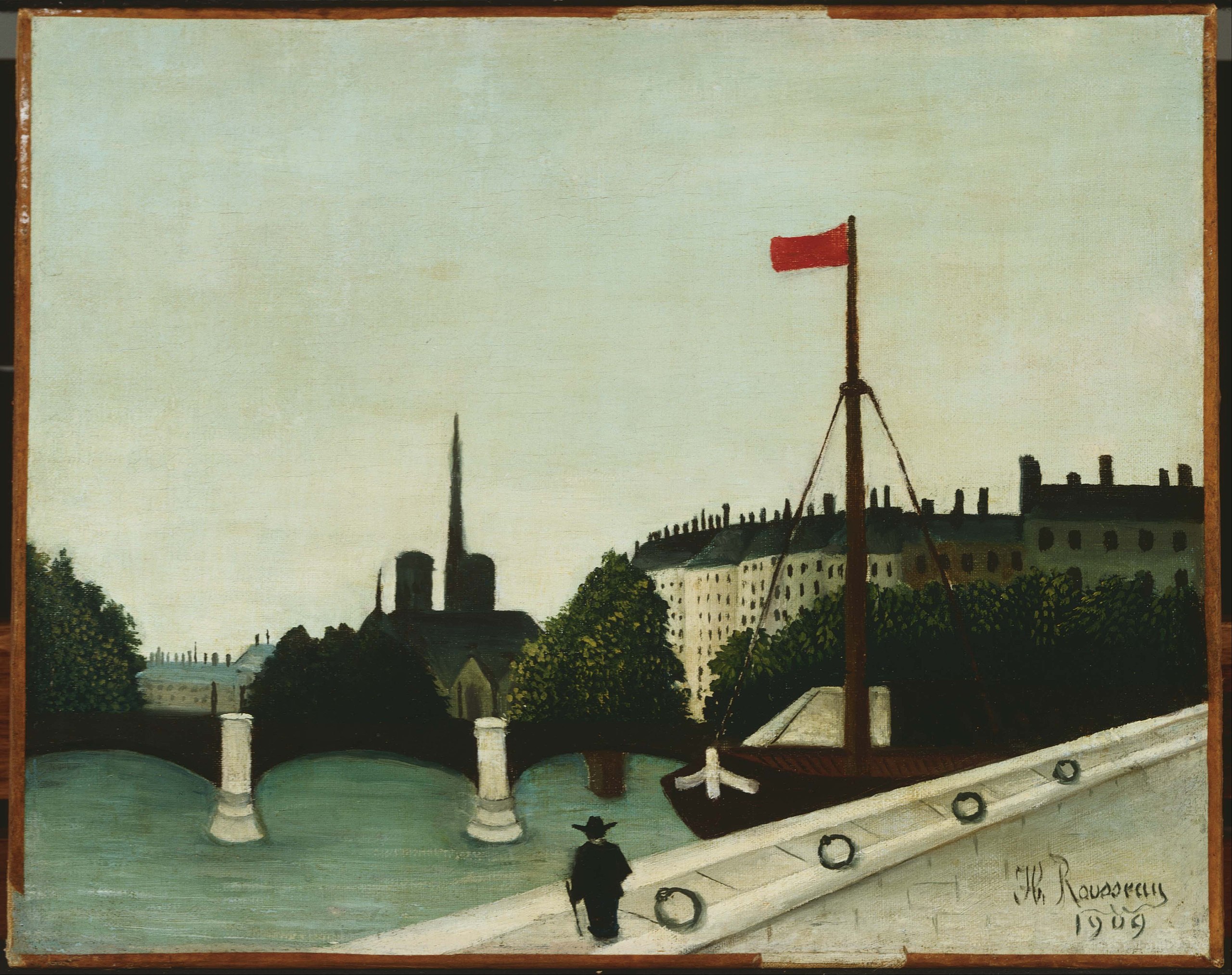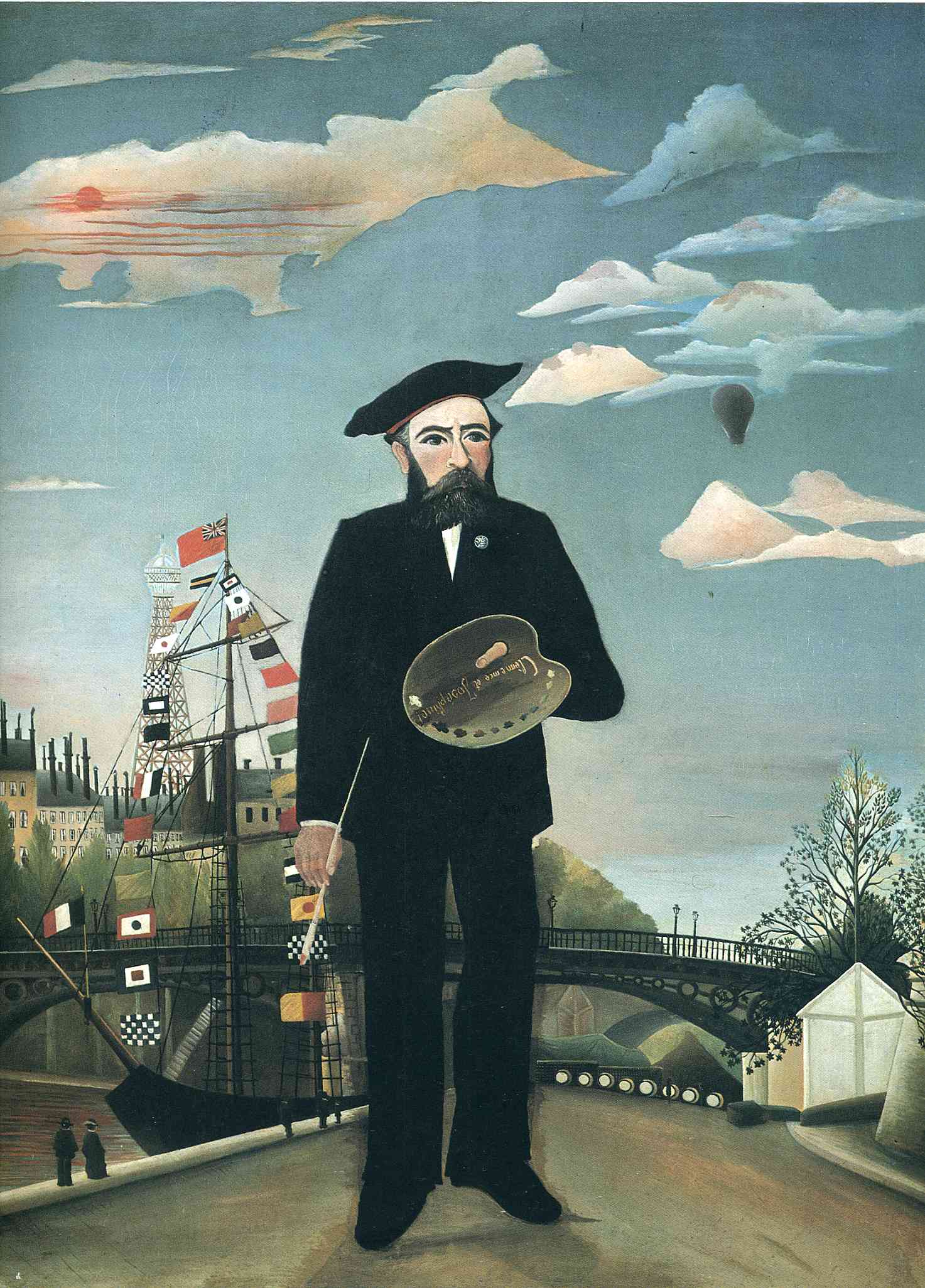In Notre Dame, Henri Rousseau, a French Post-Impressionist painter in the Naïve or Primitive style, appears to celebrate not only his identity as an artist but also his deep connection to Paris and his national pride. The solitary, black-clad figure with a walking stick may serve as a subtle self-portrait—an embodiment of Rousseau himself. As one critic observed, “He inhabits his paintings the way we inhabit our dreams.”
The painting exudes a quiet nostalgia: the spire of Sainte-Chapelle and the towers of Notre Dame, bathed in an ethereal glow, seem to captivate the lone figure’s gaze. The simple yet refined composition and luminous colors are hallmarks of Rousseau’s late style, echoing the influence of Corot, whom he greatly admired.
While Notre Dame may have been based on photographs and a related sketch by Rousseau, it is also likely shaped by his own memories of wandering and working along the quays of Paris. Through his poetic sensibility, he transforms the scene into something dreamlike and timeless. An early admirer of his work described the mood as one of “vesperal melancholy,” where the mast of the barge and the steeple of Notre Dame seem to speak to each other across the river.
P.S. If you'd like to learn more about Post-Impressionism, an epitome of diversity, experimentation, symbolism, and emotional introspection, enroll in our online course!
P.P.S. Here's Henri Rousseau in 10 paintings—his art is like nothing you've seen before!


 Henri Rousseau
Henri Rousseau